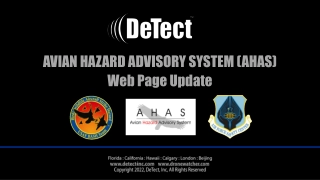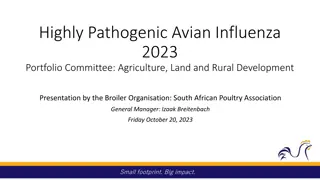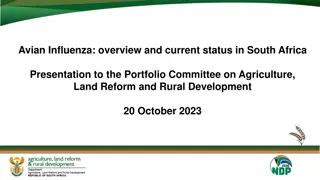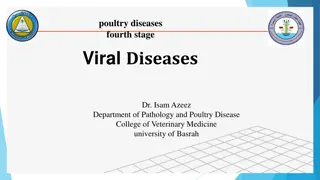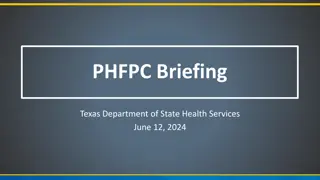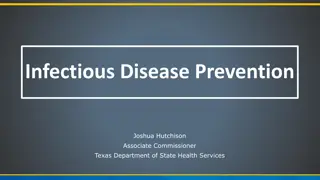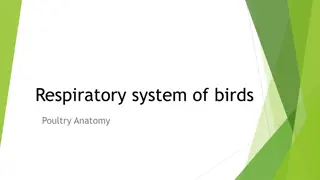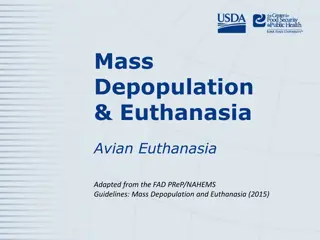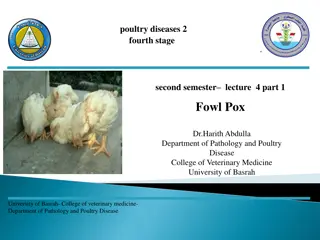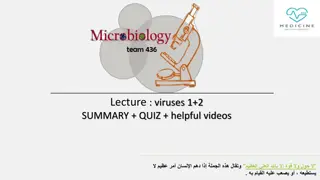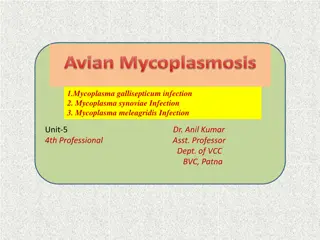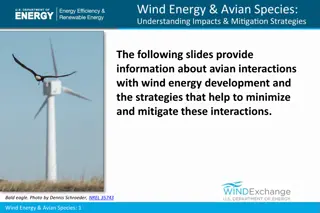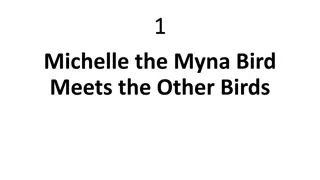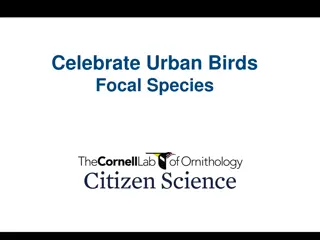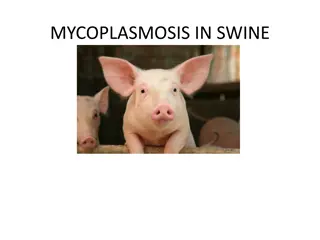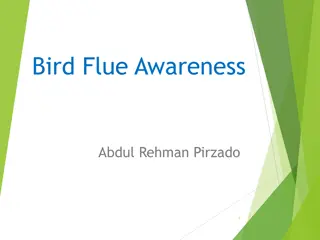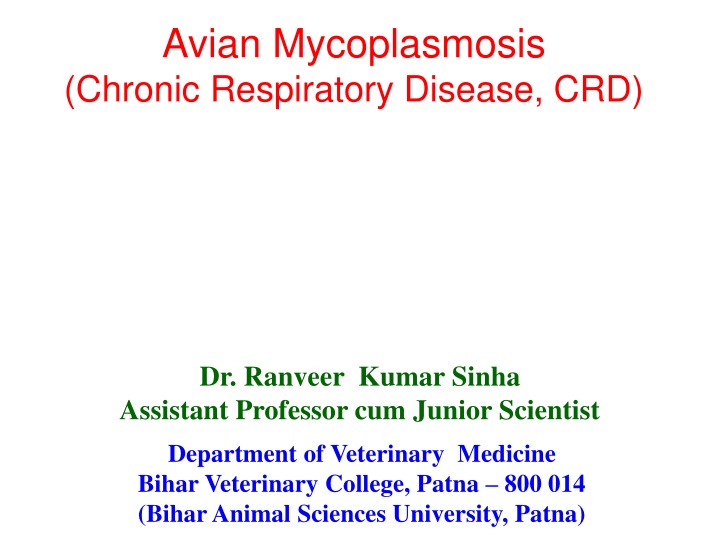
Avian Mycoplasmosis: Causes, Symptoms, and Management
Learn about Avian Mycoplasmosis, also known as Chronic Respiratory Disease (CRD), caused by Mycoplasma gallisepticum in poultry. Explore its etiology, clinical signs, incubation period, and impact on birds. Discover how to identify, manage, and prevent this disease to safeguard poultry health and production.
Download Presentation

Please find below an Image/Link to download the presentation.
The content on the website is provided AS IS for your information and personal use only. It may not be sold, licensed, or shared on other websites without obtaining consent from the author. If you encounter any issues during the download, it is possible that the publisher has removed the file from their server.
You are allowed to download the files provided on this website for personal or commercial use, subject to the condition that they are used lawfully. All files are the property of their respective owners.
The content on the website is provided AS IS for your information and personal use only. It may not be sold, licensed, or shared on other websites without obtaining consent from the author.
E N D
Presentation Transcript
Avian Mycoplasmosis (Chronic Respiratory Disease, CRD) Dr. Ranveer Kumar Sinha Assistant Professor cum Junior Scientist Department of Veterinary Medicine Bihar Veterinary College, Patna 800 014 (Bihar Animal Sciences University, Patna)
INTRODUCTION Etiology:- Mycoplasma gallisepticum (MG) It is also known as: 1. Chronic respiratory disease (CRD) of chickens. 2. Infectious sinusitis of turkeys. Several strains of M. gallisepticum have been reported, including the R strain in poultry. It causes CRD of domestic poultry, especially in the presence of managemental stresses and/or other respiratory pathogens. It causes significant economic losses on poultry farms from: 1. Chronic respiratory disease (CRD). 2. Reduced feed efficiency. 3. Decreased growth rate. 4. Decreased egg production. 5. Carcasses downgrades.
Incubation Period Experimentally infected poultry develop symptoms after 6 - 21 days. In natural infections, the incubation period is variable; infected birds may be asymptomatic for days or months until stressed. Stressors such as: 1. Viral infections 2. Vaccination with live viruses 3. Cold weather 4. Crowding Can trigger disease outbreaks in infected flocks. Morbidity and Mortality:- In chickens with uncomplicated infections, the morbidity rate is high and the mortality rate low. More severe disease occurs if the birds are concurrently infected with other viruses or bacteria.
CLINICAL SIGNS M. gallisepticum infections vary from asymptomatic to severe, depending on the infecting strain and other factors, such as the infection with other respiratory pathogen:- 1. NDV 2. IBV 3. E. coli
Cont----- Infected chickens usually develop respiratory symptoms that may include: 1. Depression 2. Rales 3. Coughing 4. Sneezing 5. Nasal discharges 6. Dyspnea 7. Decreased weight gain, feed efficiency and egg production
Post Mortem Lesions In uncomplicated cases in chickens, the lesions typically include: 1. Mild sinusitis 2. Tracheitis 3. Airsacculitis If chicken is infected concurrently with E. coli: 1. Thickening and turbidity of the air sacs 2. Exudative accumulations 3. Fibrinopurulent pericarditis 4. Perihepatitis
Treatment Tylan-50(tylosin) @1g/lit of water or Tiamutin 45% @55g/100 lit of water 5-7 days Limitations of treatment: 1. Mycoplasma develops resistance against the antibiotics 2. Expensive 3. Medication can not fully prevent an infection. 4. It is useful for a relatively short period of time,
Cont-- Egg Transmission, If a flock proves to be positive for M.G. there are several possibilities to prevent vertical transmission to the broiler flocks: 1. The P.S. Flock can be killed. This is the only completely safe procedure to prevent further spread of the disease, but of course it is not always practical. 2. Treatment of the hatching egg :- Egg dipping in a 2500 ppm containing tylosin solution before incubation
Biosecurity 1. Limit visitors and movement of vehicles 2. Make sure that all visitors change clothes and footwear on the entrance of the farm and disinfect their hands. 4. As most Mycoplasma s are killed within two days, we keep two days as a minimum safety period between visiting possibly infected farm and visiting a M.G. clean farm. 5. Staff should not be allowed to have any contact with poultry outside their work. Otherwise, the same period of two days counts.
Vaccination 1. Live vaccines 2. Killed vaccines Live vaccines F-strain (Avipro MGF, LAH)Can produce immunity. Killed Vaccines. Killed vaccines are safe to use and give generally a reasonable protection.

